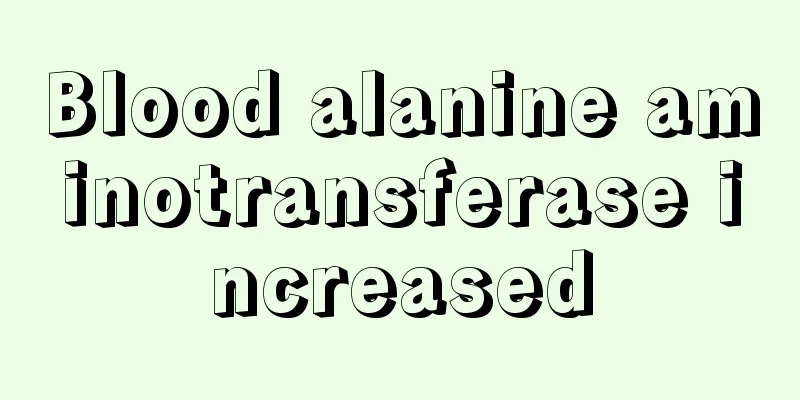How to quickly treat hamartoma

|
Although hamartoma is not a malignant tumor, it is still very harmful. If it is not treated in time, some difficult-to-cure complications will occur, which will endanger our health. We should go to the hospital for diagnosis and treatment as soon as possible. Here I will introduce to you how to quickly treat hamartoma: Hamartoma is a substantial space-occupying lesion, a type of lipoma, composed of thick-walled blood vessels, smooth muscle and mature adipose tissue, and can occur singly or multiple times. Usually, B-ultrasound and CT examinations have a high positioning and qualitative diagnosis rate for hamartomas. Although hamartomas are benign, they must be surgically removed. Only the pathological diagnosis after surgery is accurate. Although it does not metastasize in the near future, it may turn into cancer and is constantly destroying normal organ tissues. Having an extra abnormal thing in the body is also a psychological burden, so surgery is necessary. Renal hamartoma, also known as renal angiomyolipoma, is a benign tumor composed of abnormally proliferating blood vessels, smooth muscles and adipose tissue in different proportions. The disease can occur not only in the kidneys, but also in the brain, eyes, heart, lungs, bones and other parts. The disease is very harmful to the patient's body, so it needs to be treated as soon as possible after diagnosis. What should I do if I have a hamartoma? 1. Observation: Oesterling believed that tumors <4 cm can be left untreated, but close follow-up is required. Johns Hopkins reported a group of 35 cases, some of which did not continue to grow for many years. Steiner advocated that patients <4 cm should be followed up once a year even if they are asymptomatic; patients >4 cm should be followed up once every six months if they are asymptomatic or have mild symptoms. 2. Embolization: Arterial embolization should first be considered in cases of bleeding. According to experience, the volume of the tumor does not decrease after embolization, but the bleeding can be stopped. Superselective renal artery branch embolization is often used to protect some renal function. 3. Nephron-sparing surgery: Tumors <5cm can be enucleated, especially those at the edge of the kidney. However, some tumors have unclear capsules, irregular shapes, and unclear interfaces, making enucleation unsafe. In this case, partial nephrectomy can be performed. 4. Surgical treatment: The procedure of preserving renal tissue, which we call partial nephrectomy, can not only completely remove the tumor, but also preserve renal tissue and protect renal function to the maximum extent. It has a very good long-term effect and is very meaningful for the treatment of renal hamartoma (including cases of partial rupture and bleeding). Partial nephrectomy is divided into open surgery and laparoscopic surgery. According to the current medical level, laparoscopic surgery is recommended as the first choice. It not only has less trauma and completely removes the tumor, but also can retain pathology to confirm the nature of the tumor. In recent years, laparoscopic surgery has gradually become the preferred method for the treatment of renal hamartoma with its unique advantages such as less trauma, fast wound healing, short hospitalization time, less bleeding and beautiful incision. 5. Kidney transplantation or hemodialysis: Only applicable to patients who must undergo bilateral nephrectomy due to bilateral lesions leading to renal failure or tumor rupture and bleeding. 6. Interventional embolization: Generally speaking, interventional embolization is simple and safe, but some scholars believe that this treatment is not thorough and cannot guarantee complete blockage of the blood supply to the hamartoma, so there is a possibility of secondary embolization or conversion to surgical treatment. However, it is a good first aid method for ruptured bleeding. Unilateral renal angiolipoma is a benign lesion with a good prognosis. For patients with bilateral or multiple lesions and renal insufficiency, their quality of life will still be affected despite conservative treatment. For a few cases where multiple organs are invaded, such as lymph nodes, brain, heart, or even tumor thrombi invade blood vessels, the prognosis depends on the condition of the invaded organs. |
<<: What method is suitable for treating hamartoma
>>: Best treatment for hamartoma
Recommend
Can I take vitamin C after drinking alcohol?
People will feel that their bodies become very un...
Are mosquito repellent buckles harmful to the body?
There are a lot of mosquitoes in summer, and babi...
Take a cold shower to wash your hair
In life, some people choose to wash their hair wi...
Can the leaves of the southern candle be boiled and drunk? What are the effects?
As a common Chinese herbal medicine, some people ...
Why do normal people have low blood sugar
As we all know, hypoglycemia is a disease. If you...
Chest tightness, shortness of breath, right rib pain
The ribs that we like to eat in daily life are ac...
What is the reason for the red and swollen belly button
The belly button is an important part connecting ...
Urgent but infrequent urination
Many people in life experience frequent and urgen...
Behaviors that harm the liver
Since when, liver disease has become a disease th...
How much does it cost to treat the early symptoms of nasopharyngeal carcinoma? What are the methods of treating nasopharyngeal carcinoma?
How much does it cost to treat early symptoms of ...
Basic moves for girls' street dance
Street dance is a very popular dance style nowada...
What does it mean if there is a mole on the right side of the forehead?
Moles can grow on all parts of the human body, bu...
Is the cure rate of malignant anterior mediastinal teratoma high?
Does malignant anterior mediastinal teratoma have...
What is the best treatment for pituitary tumors
What is the best treatment for pituitary tumors? ...
How is brain cancer diagnosed
In recent years, brain cancer has become one of t...









